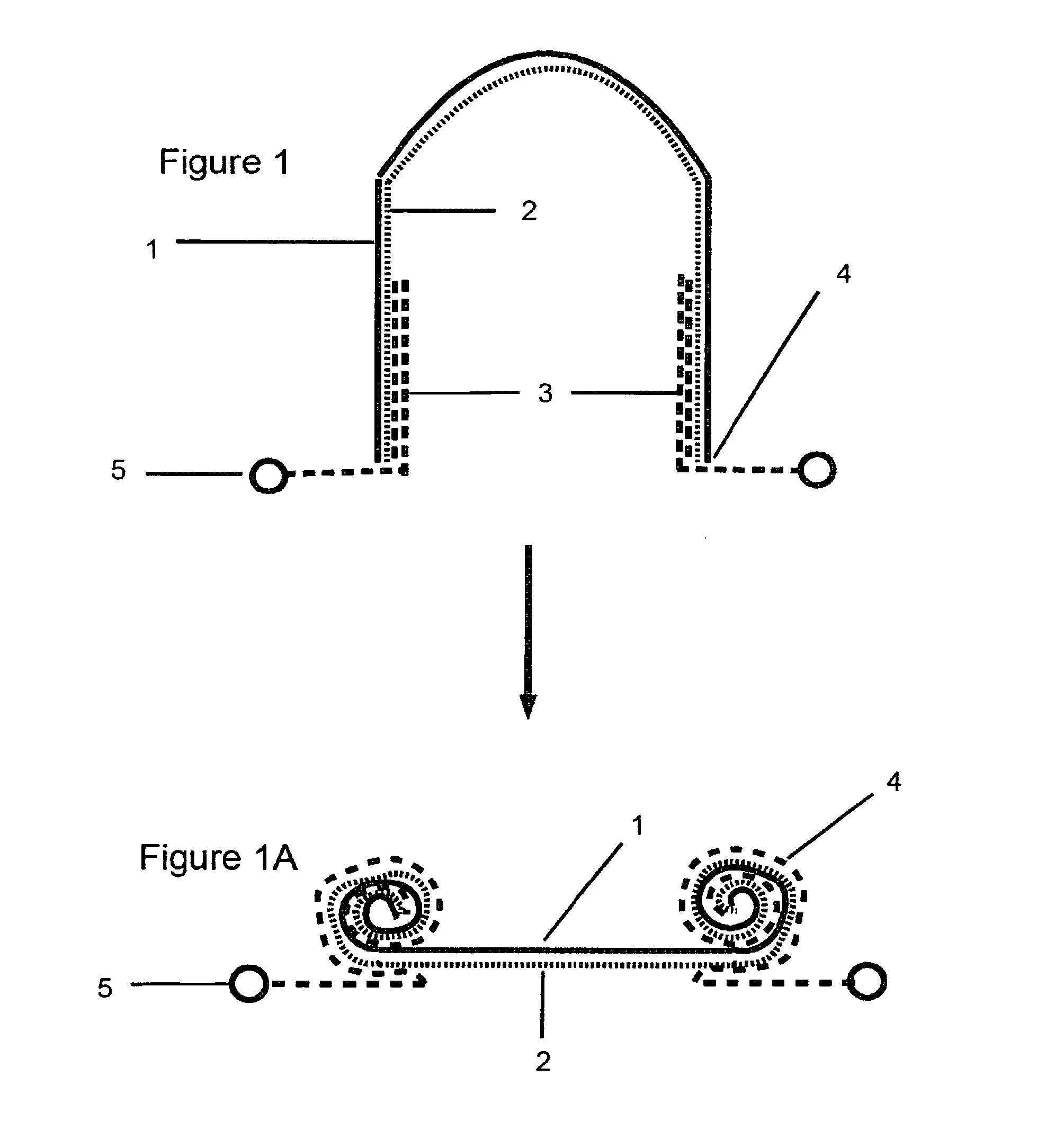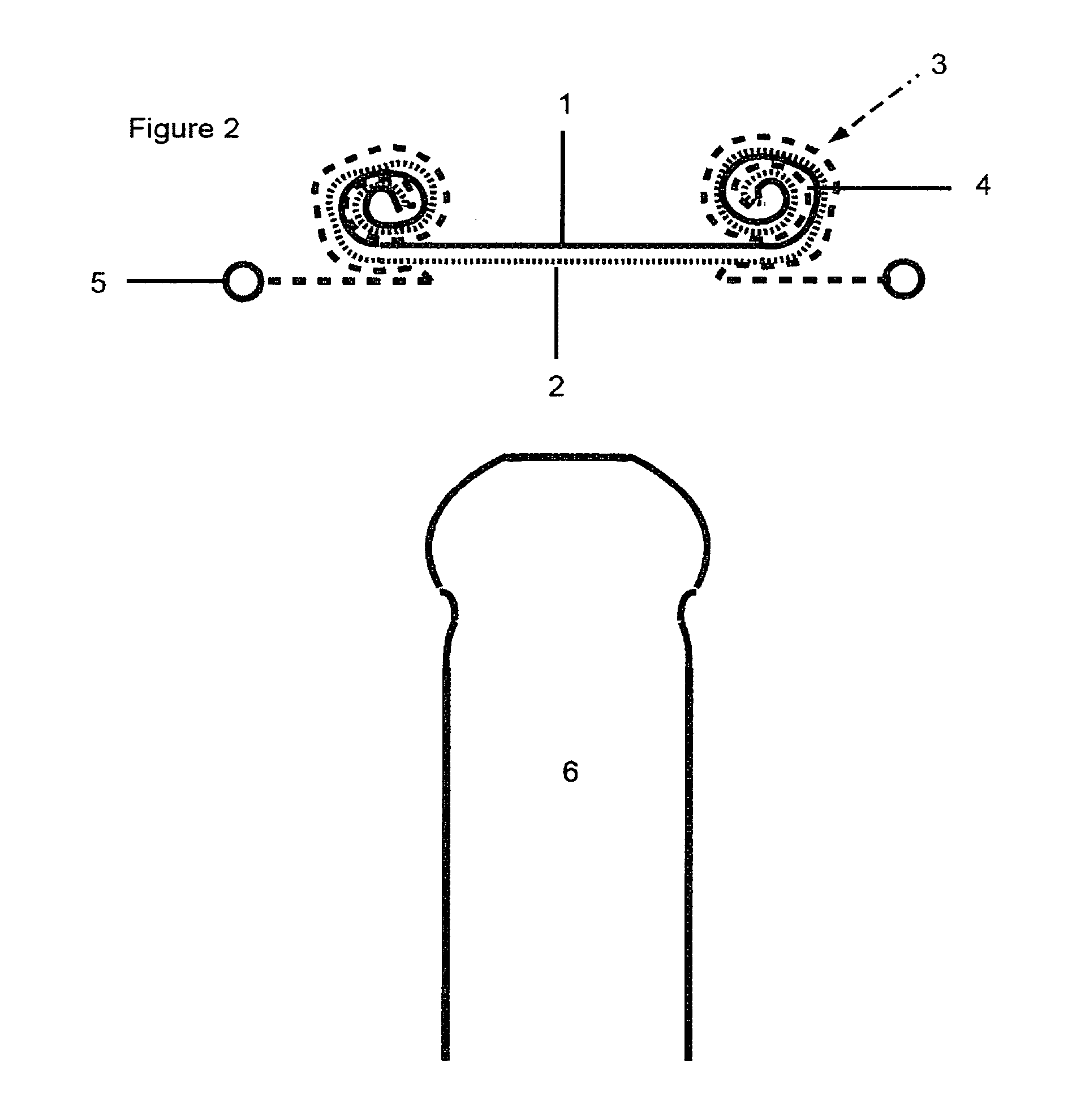Adhesive condom and deployment
a technology of adhesive condoms and adhesive strips, applied in the field of adhesive strips, can solve the problems of reducing the safety of users, and reducing the compression of the penis, so as to increase the barrier protection and contraceptive effect, reduce the compression, and improve the safety of users
- Summary
- Abstract
- Description
- Claims
- Application Information
AI Technical Summary
Benefits of technology
Problems solved by technology
Method used
Image
Examples
Embodiment Construction
[0040]The condom is manufactured of a much thinner and preferably non-elastic, but distensible artificial membrane. Specifically, the membrane utilized should at least be plastic, meaning capable of deforming to adapt to the penis without retaining elastic forces to compress the penis once applied.
[0041]The membrane of manufacture should be permeable to gases and air (for instance, GoreTex™, generically known as polytetrafluoroethylene monopolymer). The membrane may also be partially permeable to liquids and particulates at least an order of magnitude smaller than the smallest viruses known.
[0042]It is preferred, but not prohibited, that condoms not be manufactured from latex. While the most prevalent condom material used today, latex condoms require very thick layers and have too many imperfections to work effectively. This is known, but proprietary information discussed in closely held public health documents.
[0043]A firm adhesive is to be applied to the inside of the condom. The ...
PUM
 Login to View More
Login to View More Abstract
Description
Claims
Application Information
 Login to View More
Login to View More - R&D
- Intellectual Property
- Life Sciences
- Materials
- Tech Scout
- Unparalleled Data Quality
- Higher Quality Content
- 60% Fewer Hallucinations
Browse by: Latest US Patents, China's latest patents, Technical Efficacy Thesaurus, Application Domain, Technology Topic, Popular Technical Reports.
© 2025 PatSnap. All rights reserved.Legal|Privacy policy|Modern Slavery Act Transparency Statement|Sitemap|About US| Contact US: help@patsnap.com



